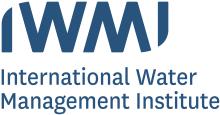Resource information
Approximately half of the irrigated area of Iran falls under different types of salt-affected soils and average yield losses may be as high as 50 percent. Slightly and moderately salt-affected soils are mostly found on the piedmonts at the foot of the Elburz (Alborz) Mountains in the northern part of the country. The soils having severe to extreme salinity are predominantly located in the Central Plateau, the Khuzestan and Southern Coastal Plains and the Caspian Coastal Plain. The process of salinization of the surface water resources is mainly due to natural conditions, and to a lesser extent, to the discharge of drainage water into the river systems. Estimates show that about 6.7 km3 of brackish water flow annually through 12 major rivers. There is no straightforward solution to the complex problems of salt-induced soil and water resources degradation in Iran. The approaches addressing the management of these resources need to be multidimensional and must take into account biophysical and environmental conditions of the target areas as well as livelihood aspects of the associated communities



